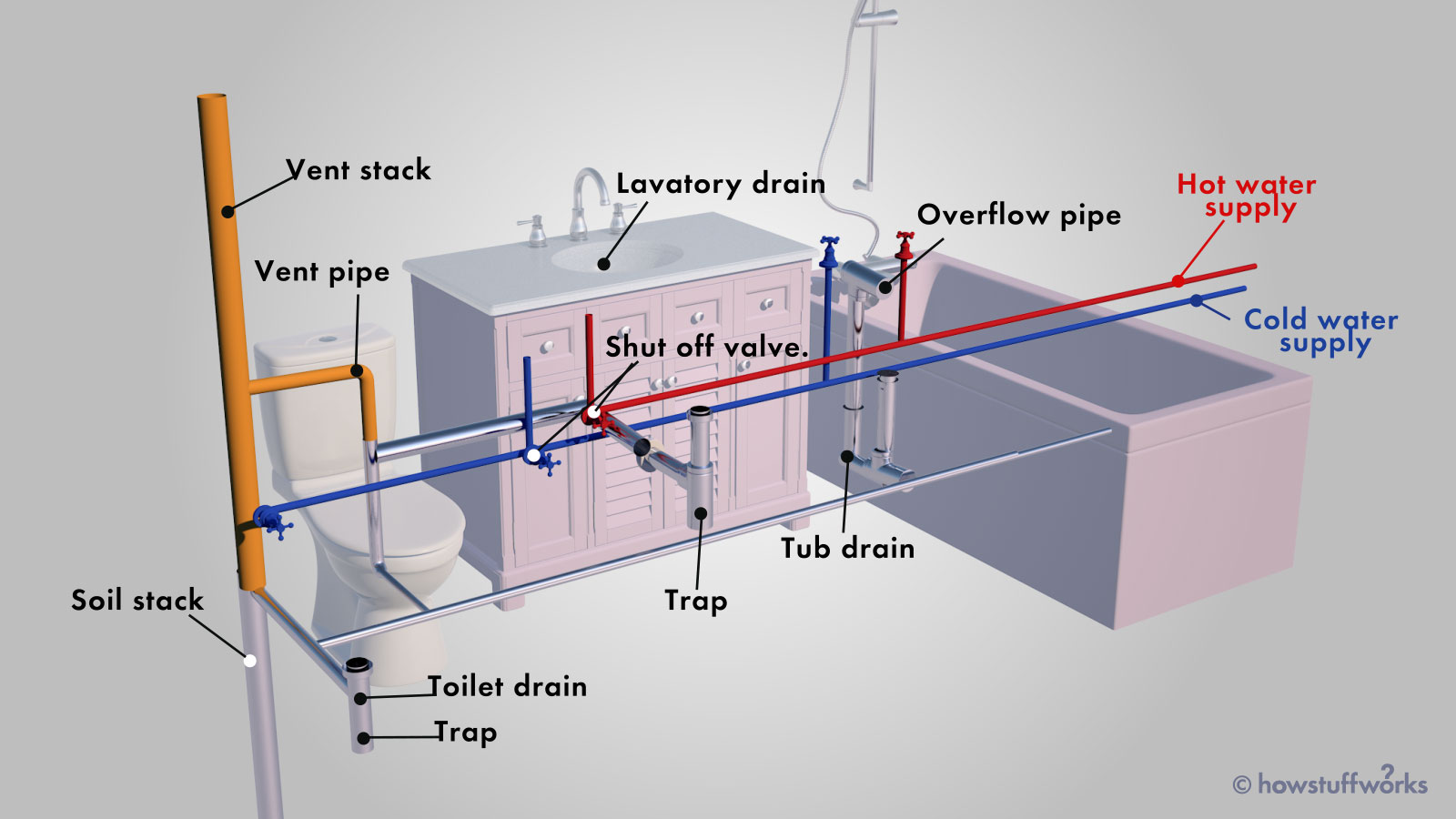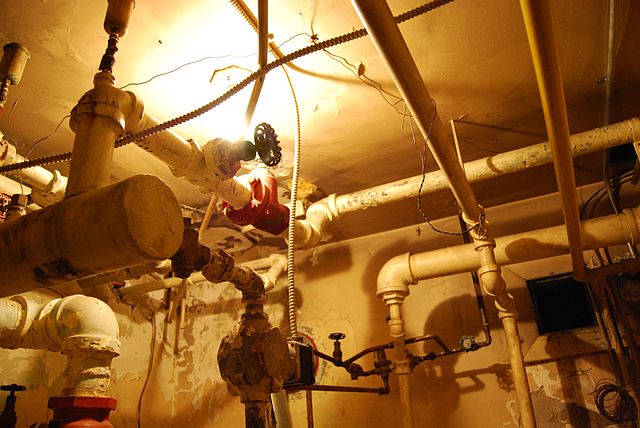An In-Depth Look at Your House's Plumbing System Anatomy
Click HereListed here down the page you might get more decent expertise when it comes to Exploring Your Homes Plumbing Anatomy.

Comprehending how your home's plumbing system functions is crucial for every single home owner. From providing clean water for drinking, food preparation, and bathing to safely removing wastewater, a well-maintained pipes system is important for your household's health and wellness and comfort. In this comprehensive overview, we'll check out the elaborate network that comprises your home's plumbing and offer tips on upkeep, upgrades, and taking care of usual issues.
Introduction
Your home's pipes system is greater than just a network of pipelines; it's an intricate system that ensures you have access to clean water and reliable wastewater elimination. Understanding its components and just how they interact can assist you avoid pricey repair work and make sure everything runs smoothly.
Standard Parts of a Pipes System
Pipes and Tubes
At the heart of your plumbing system are the pipelines and tubing that lug water throughout your home. These can be made of numerous products such as copper, PVC, or PEX, each with its advantages in regards to resilience and cost-effectiveness.
Fixtures: Sinks, Toilets, Showers, and so on.
Fixtures like sinks, bathrooms, showers, and bathtubs are where water is utilized in your house. Comprehending how these components connect to the plumbing system assists in detecting problems and intending upgrades.
Valves and Shut-off Points
Shutoffs control the circulation of water in your pipes system. Shut-off valves are vital during emergency situations or when you require to make repair work, permitting you to separate parts of the system without disrupting water flow to the whole residence.
Supply Of Water System
Main Water Line
The primary water line attaches your home to the community water system or an exclusive well. It's where water enters your home and is distributed to different fixtures.
Water Meter and Stress Regulatory Authority
The water meter measures your water usage, while a pressure regulator makes sure that water moves at a safe pressure throughout your home's plumbing system, stopping damages to pipes and fixtures.
Cold Water vs. Hot Water Lines
Comprehending the difference in between cold water lines, which supply water directly from the major, and hot water lines, which carry heated water from the hot water heater, helps in fixing and planning for upgrades.
Drain System
Drain Pipes Pipes and Traps
Drain pipes lug wastewater away from sinks, showers, and bathrooms to the sewage system or sewage-disposal tank. Traps stop sewage system gases from entering your home and additionally trap particles that might create obstructions.
Air flow Pipelines
Air flow pipes allow air into the drainage system, avoiding suction that might reduce water drainage and create catches to vacant. Proper ventilation is important for maintaining the integrity of your plumbing system.
Significance of Appropriate Drainage
Guaranteeing proper drainage prevents backups and water damage. On a regular basis cleansing drains pipes and keeping catches can protect against pricey fixings and expand the life of your pipes system.
Water Heater
Kinds Of Water Heaters
Water heaters can be tankless or traditional tank-style. Tankless heating units heat water on demand, while containers save warmed water for instant use.
Just How Water Heaters Link to the Plumbing System
Understanding how hot water heater attach to both the cold water supply and warm water distribution lines helps in diagnosing problems like insufficient warm water or leakages.
Maintenance Tips for Water Heaters
Consistently purging your water heater to eliminate debris, inspecting the temperature setups, and checking for leaks can expand its life expectancy and enhance energy efficiency.
Usual Plumbing Issues
Leakages and Their Causes
Leakages can happen due to maturing pipelines, loose installations, or high water stress. Dealing with leakages quickly stops water damage and mold and mildew growth.
Clogs and Clogs
Blockages in drains pipes and toilets are usually triggered by flushing non-flushable things or a buildup of oil and hair. Utilizing drainpipe displays and being mindful of what drops your drains can prevent blockages.
Signs of Pipes Problems to Expect
Low tide pressure, slow-moving drains, foul odors, or unusually high water expenses are signs of prospective plumbing problems that must be addressed quickly.
Pipes Maintenance Tips
Normal Evaluations and Checks
Arrange annual pipes inspections to capture concerns early. Look for indications of leakages, corrosion, or mineral build-up in faucets and showerheads.
Do It Yourself Upkeep Tasks
Easy tasks like cleansing faucet aerators, checking for commode leaks using color tablet computers, or insulating revealed pipes in chilly environments can prevent major plumbing concerns.
When to Call a Professional Plumbing
Know when a plumbing problem calls for professional experience. Attempting intricate repairs without appropriate expertise can lead to more damage and greater repair prices.
Upgrading Your Plumbing System
Reasons for Updating
Updating to water-efficient fixtures or replacing old pipes can enhance water high quality, minimize water costs, and increase the value of your home.
Modern Plumbing Technologies and Their Advantages
Discover modern technologies like wise leakage detectors, water-saving commodes, and energy-efficient hot water heater that can save money and decrease ecological effect.
Price Factors To Consider and ROI
Compute the ahead of time prices versus long-term savings when considering plumbing upgrades. Numerous upgrades pay for themselves through decreased utility expenses and fewer repair services.
Ecological Influence and Preservation
Water-Saving Components and Appliances
Installing low-flow faucets, showerheads, and bathrooms can substantially minimize water use without compromising efficiency.
Tips for Reducing Water Use
Straightforward behaviors like fixing leakages without delay, taking much shorter showers, and running complete lots of laundry and dishes can conserve water and lower your utility bills.
Eco-Friendly Pipes Options
Take into consideration lasting plumbing materials like bamboo for flooring, which is durable and environmentally friendly, or recycled glass for countertops.
Emergency Preparedness
Actions to Take Throughout a Pipes Emergency
Know where your shut-off shutoffs lie and just how to shut off the water in case of a ruptured pipeline or significant leak.
Significance of Having Emergency Contacts Convenient
Maintain get in touch with info for local plumbings or emergency situation services readily offered for fast reaction during a pipes dilemma.
DIY Emergency Fixes (When Applicable).
Short-lived repairs like utilizing duct tape to spot a leaking pipe or positioning a bucket under a trickling tap can reduce damage till an expert plumbing arrives.
Final thought.
Understanding the makeup of your home's plumbing system empowers you to keep it efficiently, saving money and time on repair work. By following regular upkeep routines and remaining notified about modern-day pipes innovations, you can ensure your pipes system operates successfully for years ahead.
Understanding Your Home Plumbing System: A Comprehensive Guide
Plumbing System: The Lifeline of Your Home
At its core, the plumbing system is designed to perform two primary functions: bring fresh water into your home and remove wastewater. The system is a network of pipes, fixtures, and other components that transport water and sewage. Residential plumbing systems include potable water supply lines, drain-waste-vent (DWV) systems, and various plumbing fixtures that make water use in daily tasks possible.
Key Components:
Water Supply: This part of your plumbing system brings municipal water into your home, passing through the main water supply line. It s responsible for supplying all water needs, from drinking to bathing.
Drainage System: It carries waste and water away from your home to the sewer or septic system. This system includes all the piping within your home that leads to external sewage or septic systems.
Vent System: An essential yet often overlooked component, the vent system allows sewer gases to escape and lets air into the drainpipes, ensuring water and waste move correctly through the system.
Fixture: More Than Just Taps and Toilets
Plumbing fixtures are the most interactive parts of the plumbing system, including faucets, showers, toilets, and sinks. Each fixture is connected to the plumbing system and plays a role in either the delivery of freshwater or the disposal of waste and wastewater.
Types of Fixtures:
Faucets and Sinks: Used for washing hands, dishes, and other daily water needs.
Toilets: Dispose of human waste through the sewage system.
Bathtubs and Showers: Provide bathing facilities, requiring both hot and cold water supply.
Water Supply: The Source of Life
The water supply system is a critical component, ensuring that potable water is available throughout your home for various uses, including drinking, cooking, and cleaning. This system consists of pipes that distribute water to different parts of the house, controlled by valves to regulate the water flow.
Types of Plumbing: Materials and Methods
Various types of plumbing systems and materials are used in residential settings, each with its advantages and applications. From copper and PVC pipes for water supply to cast iron and ABS for drainage, the choice of materials can impact the longevity and efficiency of your plumbing system.
https://intownplumbingtx.com/articles/home-plumbing-system-guide/

Understanding Your Home Plumbing System: A Comprehensive Guide
Plumbing System: The Lifeline of Your Home
At its core, the plumbing system is designed to perform two primary functions: bring fresh water into your home and remove wastewater. The system is a network of pipes, fixtures, and other components that transport water and sewage. Residential plumbing systems include potable water supply lines, drain-waste-vent (DWV) systems, and various plumbing fixtures that make water use in daily tasks possible.
Key Components:
Water Supply: This part of your plumbing system brings municipal water into your home, passing through the main water supply line. It s responsible for supplying all water needs, from drinking to bathing.
Drainage System: It carries waste and water away from your home to the sewer or septic system. This system includes all the piping within your home that leads to external sewage or septic systems.
Vent System: An essential yet often overlooked component, the vent system allows sewer gases to escape and lets air into the drainpipes, ensuring water and waste move correctly through the system.
Fixture: More Than Just Taps and Toilets
Plumbing fixtures are the most interactive parts of the plumbing system, including faucets, showers, toilets, and sinks. Each fixture is connected to the plumbing system and plays a role in either the delivery of freshwater or the disposal of waste and wastewater.
Types of Fixtures:
Water Supply: The Source of Life
The water supply system is a critical component, ensuring that potable water is available throughout your home for various uses, including drinking, cooking, and cleaning. This system consists of pipes that distribute water to different parts of the house, controlled by valves to regulate the water flow.
Types of Plumbing: Materials and Methods
Various types of plumbing systems and materials are used in residential settings, each with its advantages and applications. From copper and PVC pipes for water supply to cast iron and ABS for drainage, the choice of materials can impact the longevity and efficiency of your plumbing system.
https://intownplumbingtx.com/articles/home-plumbing-system-guide/
I'm certainly very occupied with Anatomy of a House: Understanding the Components and I really hope you enjoyed the article. Are you aware of anybody else who is in the market for the niche? Feel free to promote it. Thank you so much for your time spent reading it.
Automated Marketing